 Now this one’s going to be a surprise. Unusually for a Closet Classic, it charted fairly high on its release (six in the UK) and was certified gold but “Results” is one of those albums that seems to have been unfairly dismissed as a product of its time. To many people it seemed like a bit of a strange combination; Neil Tennant and Chris Lowe were at the peak of their popularity and Liza Minnelli (who had recorded a few albums) was much better known as a nightclub and Broadway singer and the actress who gave a stunning performance as Sally Bowles in John Kander and Fred Ebb’s “Cabaret”, adapted from Christopher Isherwood’s short novel, “Goodbye to Berlin”. So far, so good.
Now this one’s going to be a surprise. Unusually for a Closet Classic, it charted fairly high on its release (six in the UK) and was certified gold but “Results” is one of those albums that seems to have been unfairly dismissed as a product of its time. To many people it seemed like a bit of a strange combination; Neil Tennant and Chris Lowe were at the peak of their popularity and Liza Minnelli (who had recorded a few albums) was much better known as a nightclub and Broadway singer and the actress who gave a stunning performance as Sally Bowles in John Kander and Fred Ebb’s “Cabaret”, adapted from Christopher Isherwood’s short novel, “Goodbye to Berlin”. So far, so good.
The album’s lead single, “Losing my Mind”, was being played to death on the radio and that, as well as a recommendation from a musician friend who was a huge Pet Shop Boys fan made me go out and buy the album. It’s no exaggeration to say that I played it solidly in the car and at work (the advantages of working in a music bar) for a month and I can still quite happily listen to it from start to finish now. So what’s so special apart from the fact that it’s Liza Minnelli and the Pet Shop Boys?
The album opens in the way you might expect with an uptempo Tennant-Lowe song, “I Want You Now” followed by “Losing my Mind”, a Stephen Sondheim song from the musical “Follies”. You can’t accuse the team of sticking to the original arrangement too closely; it’s a 119bpm monster with Fairlights on steroids and Liza Minnelli belting out the vocal. The original is wistfully obsessive, but Liza sounds like she’s delighted to be losing her mind; bring it on and double helpings please.
The following three songs are Tennant-Lowe originals, but that’s about the only common factor. It’s a tough call, but “If There was Love” is probably the most audacious song on the album, with paranoid and prescient lyrics (‘Men of affairs, women with power, satellites talking to clutter our lives’), sax from Courtney Pine and a recitation of Shakespeare’s Sonnet 94 during the coda. “So Sorry I Said” is played at a very un-PSB tempo of 70bpm with a breathy Liza vocal and a bit of programming help from C J Mackintosh. “Don’t Drop Bombs” is back to house tempo again with a spoken verse/sung chorus structure and a completely mad programmed cowbell percussion track.
“Twist in My Sobriety” takes the Tanita Tikaram original, gives it hip-hop beats, a rap intro taken from “Liza With a Z” (Ebb and Kander again), creating a truly original take on a classic song (and, yes, Tanita loves it). “Rent” reverses the process of “Losing my Mind” by taking an uptempo PSB original and slowing it down to ballad speed while using a string arrangement by Angelo Badalamenti to create drama and pathos underneath a close-miked and perfectly-controlled vocal.
The album’s final cover (also released as a single) is “Love Pains”, which was a hit for Yvonne Elliman ten years earlier and was also covered in 1989 by Viola Wills and the evergreen Hazell Dean. It’s a house stomper, which also received the the obligatory remix treatment from Steve “Silk” Hurley, and features some real guitar from British session player JJ Belle. The verse and pre-chorus feature Liza’s voice solo and upfront in the mix, while in the chorus she has to compete with Katie Kissoon, Carole Kenyon and Tessa Niles, wringing out every last bit of emotion. You even get a trucker’s gear change thrown in for good measure.
“Tonight is Forever” feels like the second act of “Rent” with similar lyrical themes, and strings arranged and conducted by Anne Dudley sounding more lush and less overtly dramatic than Angelo Badalamenti’s work. Like “Rent”, this would be perfectly at home in a Sondheim show. The final track, “I Can’t Say Goodnight” is the joker in the pack; it’s the only song which relies mainly on traditional rock and pop instruments and sounds like an updated 60s American pop song with a breathy vocal and guitar and sax courtesy of JJ Belle and Courtney Pine again. Lyrically, it’s not a bad way to end an album.
So, what it is about this album that really got under my skin? Well, it’s the only time that Liza Minnelli has really stepped out of the chanteuse comfort zone, and what a way to do it; forget that acoustic piano and complicated orchestral arrangements and let’s have full-on programmed beats and wall-to-wall Fairlights. You could be cynical and say that it was a marketing ploy to get even further into the gay market, but “Results” is too full of joy and the sound of musicians having fun and doing everything to excess to be a clinical exercise. It’s the sound of two great songwriters and arrangers giving a wonderful singer a contemporary sound and pushing their own boundaries a little at the same time. There may only be ten songs, but they’re all highly-polished little gems.
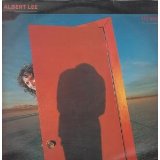 In the days following the sad and untimely death of Phil Everly, one of the musicians who was regularly interviewed was guitarist Albert Lee. I’m willing to bet that most people watching and listening had never heard of Albert Lee, despite his long relationship the Everly Brothers. The fact that he had decided early in his career to play a style of music, country, that has rarely, if ever, been fashionable in the UK meant that he had to move to the USA before achieving real recognition, joining the Crickets in 1974, then replacing the legendary James Burton in Emmylou Harris’s Hot Band in 1976. Anyway, for a few days in early January 2014, all of the old Everly Brothers songs were played across the media. I’m always happy to hear old classics reach a new audience, but the contrarian in me wanted to hear Albert Lee again, so I dug out my old vinyl copy of his second solo album, “Hiding”.
In the days following the sad and untimely death of Phil Everly, one of the musicians who was regularly interviewed was guitarist Albert Lee. I’m willing to bet that most people watching and listening had never heard of Albert Lee, despite his long relationship the Everly Brothers. The fact that he had decided early in his career to play a style of music, country, that has rarely, if ever, been fashionable in the UK meant that he had to move to the USA before achieving real recognition, joining the Crickets in 1974, then replacing the legendary James Burton in Emmylou Harris’s Hot Band in 1976. Anyway, for a few days in early January 2014, all of the old Everly Brothers songs were played across the media. I’m always happy to hear old classics reach a new audience, but the contrarian in me wanted to hear Albert Lee again, so I dug out my old vinyl copy of his second solo album, “Hiding”.
Somehow, in 1979, a single from this album managed to grab a bit of airplay, probably as a result of a particularly persistent plugger, or perhaps it was just a bit of a novelty. “Country Boy”, which opened the album, wasn’t ever going to win an Ivor Novello; it was a lyrical throwaway which showcased Albert Lee’s stunning guitar virtuosity. Throwaway or not, it grabbed my attention immediately and I scuttled off to BG Forbes to buy a copy of the album. Then back to the flat as quickly as possible to introduce vinyl to stylus while avidly reading all of the credits and sleeve notes (even an insert in this case) while listening to the album. I’ve bought many albums on the strength of one song, and I’ve been disappointed almost as many times; nothing else on “Hiding” sounded like “Country Boy” but that didn’t matter because they were all great songs.
Looking at the playing and writing credits, there were a few surprises, even with my limited knowledge of the country scene at that time. Names like Emmylou Harris and Don Everly stood out even then, but looking back with a historical perspective and greater knowledge, Buddy Emmons, Glen D Hardin, Ricky Scaggs, Rodney Crowell, Hank DeVito and Buddy Emmons were highly-respected country players at that time. More of a surprise was the inclusion of songs and performances by Chas Hodges and Dave Peacock who, after nearly twenty years as backing musicians, were now carving out a career performing cockney novelty songs. Actually I wasn’t surprised; I was gobsmacked, particularly after hearing the album’s second song, “Billy Tyler”, a Hodges/Peacock country original. I loved the song from the first time I heard it and I still love it now. I know Dean Owens will probably disagree with me here, but I think it’s the best song they ever wrote. And those are only the first two songs on the album.
“Are you Wasting my Time” is a tasteful cover of the Louvin Brothers classic with Albert Lee taking lead vocal and harmonies alongside Ricky Scaggs. “Now and Then It’s Gonna Rain”, with backing from Chas and Dave, is a country/rock song which hints at earlier Eagles material and side one closes with the beautiful Rodney Crowell ballad “On a Real Good Night”.
The side two opener is “Setting me Up”, a riff-based country/rock song written by the relatively unknown (in 1979) Mark Knopfler which is followed by another Rodney Crowell song “Ain’t Living Long like This”, a shuffle with a hint of the Buster Brown classic, “Fannie Mae”. The album’s title song is another ballad, written by Steven Rhymer (what a great name for a songwriter) and featuring backing vocals from Don Everly. The album closes out with the slow rocker, “Hotel Love”, and “Come up and See Me Any Time”, another Chas and Dave song featuring the dynamic duo themselves on piano and bass.
The album’s a classic because Albert Lee does all the things he does best; he plays guitar, sings lead and harmony vocals and chooses some tremendous songs and players to help him display these talents. There’s only one writing credit for him on “Hiding” but his interpretations of songs by other writers are arranged and played to perfection. You can hear suggestions of other artists including Iain Matthews (another wonderful interpreter of songs) and Eric Clapton but the overall sound is pure Albert Lee. I guess it’s not difficult to see why it wasn’t a hit in the UK in 1979 as post-punk took over from punk, but it has aged very well over the thirty-five years since its release. Even if you don’t normally follow links these articles, have a look at the live performance of “Country Boy” with Vince Gill. It’s not just about the great playing; the audience love it and you can see that the band loves it too. Give it a listen.
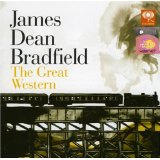 Just in case anyone hadn’t realised, I’ve loved the Manics almost from day one. From the first time I heard “Slash ‘n’ Burn”, I was hooked and I’ve never heard anything since that came remotely close to unhooking me. I loved the Richey-period Manics because of Richey’s lyrics and James’s voice, playing and ability to write a memorable tune and I didn’t skip a beat when Nicky Wire took over as main lyricist for the band. He’s a gifted writer and he has an opinion or two; I like that.
Just in case anyone hadn’t realised, I’ve loved the Manics almost from day one. From the first time I heard “Slash ‘n’ Burn”, I was hooked and I’ve never heard anything since that came remotely close to unhooking me. I loved the Richey-period Manics because of Richey’s lyrics and James’s voice, playing and ability to write a memorable tune and I didn’t skip a beat when Nicky Wire took over as main lyricist for the band. He’s a gifted writer and he has an opinion or two; I like that.
So, in 2006, when James Dean Bradfield released his solo album “The Great Western”, I couldn’t wait to get my hands on a copy. I loved it the album the first time I listened to it and I still love it every time I listen to it. The highest chart position it reached (with minimal promotion) was 22, and that puts it firmly in Closet Classic territory. Oh, and my favourite mondegreen is on this album, but I’ll tell you about that later.
So why would a songwriter in a commercially successfully and critically-acclaimed band want to release a solo album? Well, the Manics have always been big on the manifesto songs but, with a few exceptions (including “Life Becoming a Landslide” and “Ocean Spray”), they’ve not really done the personal, apolitical and introspective thing. If you’re a songwriter as prolific as James, you’re always going to have a bunch of great songs that just won’t work on any band album. When you listen to “The Great Western”, you realise that it would be criminal not to get these songs out there.
I love an album that opens with a big guitar riff and “The Great Western” certainly ticks that box; throw in some handclaps as well on the intro to “That’s No Way to Tell a Lie” and you’ve got my attention from the first four bars (it was even used on “Match of the Day”, so full marks to that BBC researcher). The production on the album is generally Spectoresque wall-of-sound, with the exception of the beautiful minimalist acoustic Jacques Brel cover “To See a Friend in Tears” and the final song “Which Way to Kyffin” which references Laurie Anderson’s “O Superman”, and James has great fun with all of the melodic invention, layers of acoustic and electric guitars and completely over-the-top backing vocals that you would never hear on a Manics record (ok, maybe on “Everything Must Go”).
Lyrically, the album generally looks backwards to the early days of the Manics, life in the valleys in the 1980s and moving away from that life. “An English Gentleman” is a tribute to the band’s first publicist, Philip Hall, “Say Hello to The Pope” and “Bad Boys and Painkillers” (the only song on the album co-written with Nicky Wire) look back to life in Blackwood, and “Emigré” deals with the conflict created by leaving your roots to pursue your dreams. “Still a Long Way to Go” sounds a lot like a prequel to the highly personal “Ocean Spray” and “Run Romeo Run” has a chorus to rival anything that made it on to a Manics record.
Anyone with a pair of ears knows that James Dean Bradfield can write a great tune (and you can ask Shirley Bassey about that) but “The Great Western” proves that he’s a gifted lyricist and a talented producer as well. Seven years after I bought this album, I still love to listen to it and I’m convinced that James had a huge amount of fun putting the whole thing together. I suspect it was bought almost exclusively by Manics fans and that’s a bit of a shame really because this is a superb bunch of songs and it’s eclectic, well-crafted, well-performed and well-produced.
And what about that mondegreen? After hearing “On Saturday Morning We will Rule the World” many, many times I was still confused by a line that I heard as “A book of Brie and a telephone” until I finally realised that it was “A Ford Capri and a telephone”, which is ironic given that I’ve spent the last ten years living as an emigré a couple of miles from the old Ford complex in Dagenham.
Even if you’re not a fan of the Manic Street Preachers, put your prejudices to one side and listen to an album that absolutely fizzes with emotion and musical and lyrical invention. What more could you possibly want?
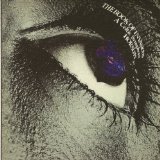 I’ve always been fascinated by the way a love of music can link episodes in your life, even when they have nothing else in common. When you meet someone and discover that you were at the same incredible gig years before or that you both love an obscure country, soul, blues or rock artist that no-one else has heard of. Or when you’re managing a venue and your entertainments manager tells you that he’s booked an artist for a St Patrick’s Day gig called Johnny Fean and you realise that it’s the Johnny Fean who played with Horslips twenty years earlier. Then, another fifteen years later you post something on a social network and the same Johnny Fean “likes” it. That’s the kind of link I mean and I want to tell you about the band and the album that triggered these coincidences.
I’ve always been fascinated by the way a love of music can link episodes in your life, even when they have nothing else in common. When you meet someone and discover that you were at the same incredible gig years before or that you both love an obscure country, soul, blues or rock artist that no-one else has heard of. Or when you’re managing a venue and your entertainments manager tells you that he’s booked an artist for a St Patrick’s Day gig called Johnny Fean and you realise that it’s the Johnny Fean who played with Horslips twenty years earlier. Then, another fifteen years later you post something on a social network and the same Johnny Fean “likes” it. That’s the kind of link I mean and I want to tell you about the band and the album that triggered these coincidences.
Horslips had released five albums before “The Book of Invasions – A Celtic Symphony” was released in April 1976. This was the first album the band recorded for Elton John’s label, DJM, and despite heavy promotion (including coloured vinyl singles) and good reviews, it only achieved an album chart position of 39 for one week in the UK. One of the reasons it’s so memorable for me is that it was part of the soundtrack for my “A” level revision through the long hot summer of 1976 (alongside Gallagher and Lyle’s “Breakaway”, Thin Lizzy’s “Jailbreak” and the Joe Walsh live album “You Can’t Argue with a Sick Mind”).
So, what makes the Horslips album a Closet Classic? The band had experimented with various permutations of rock, Irish folk and Celtic mythology on their previous albums, but it was on “The Book of Invasions” that everything gelled with the long-cherished idea of creating a classical symphony from these components. Just to wrap some context around “Invasions”, this was the era of the concept album when virtually every artist or band was trying to create a theme to link a few dodgy songs (yes, I do mean you Rick Wakeman) to create a pseudo-classical work.
Is it a symphony? Well, it’s split into three movements and it has a leitmotif which crops up throughout the album in various guises. “Daybreak” opens the album with the “Tá ‘na lá” (“It is day”) theme from a traditional Irish drinking song, in one of its many appearances, as a trumpet major key triad followed by a guitar harmonic version which leads into a harmony guitar version. before modulating into a more menacing minor key. And that’s just the first track. I’m not going to list all of the folk tunes used on the album because you can find them for yourself on the Horslips website; I’ll just say that it’s quite common on this album for a song to morph from a traditional ballad into a classic 70s riff-driven rock song.
If you’re looking for classic Celtic rock songs, then you’ll find plenty of those on this album. “Trouble (With a Capital T)”, “The Power and the Glory” and particularly “The Warm Sweet Breath of Love” (a dead ringer for the under-rated Thin Lizzy song “Running Back”) would all sound perfectly at home on “Jailbreak” which was released in the same month. But it’s not just the rock songs which work on “Invasions”; the folkier “The Rocks Remain”, “King of Morning, Queen of Day” and “Sideways to the Sun” (the story of the downfall of the Tuatha De Danann) and the instrumental interludes are all beautifully played.
I’m not saying “The Book of Invasions” is a perfect album, but it does have its perfect moments (the segue from “The Power and the Glory” to “The Rocks Remain”, for example), and at a time when everything can be found online, it would be a shame to miss this one. The scope of the album is quite breathtaking; Irish mythology rubs up against folk melodies, rock arrangements, symphonic themes, a huge range of instruments and bags of style to create a genuine classic album.
This album was the chart highpoint for Horslips in the UK and, although the subsequent “Aliens” and “The Man who Built America” were popular in the USA, the band split in 1980. Like many bands from this era, Horslips reformed for selected gigs in the noughties and can still be seen live occasionally. If you’re into rock or folk or both and you haven’t heard this before, you really should give it a listen especially after I’ve made it so easy for you.
 Some of my Closet Classics are there mainly on musical merit, some mainly on the strength of memories they evoke, but this earns its place on both counts. I first heard the songs on this EP during my Freshers’ Week at the University of Dundee and I still say that “September”, featured on this EP, is one of the finest pieces of guitar-playing I’ve ever heard live.
Some of my Closet Classics are there mainly on musical merit, some mainly on the strength of memories they evoke, but this earns its place on both counts. I first heard the songs on this EP during my Freshers’ Week at the University of Dundee and I still say that “September”, featured on this EP, is one of the finest pieces of guitar-playing I’ve ever heard live.
Cado Belle was one of 3 bands I saw in a hectic week (the other 2 were Frankie Miller’s Full House and Skeets Boliver, if you must know) that set the scene for 4 years of watching great bands, DJing and generally having a good time. I did a bit of studying as well, when I had to. I went along to the gig with my new mate Steve J (still my mate now and a bloody good bloke) in his yellow ex-GPO Morris van, which was great if you were in the passenger seat, but a bit agricultural otherwise. It had the added advantage of being absolutely impossible to lose in a car park.
We knew nothing about the band, but it was Freshers’ Week and we were determined to do everything that was on offer, especially if it also involved having a few beers. We discovered that Cado Belle, fronted by singer Maggie Reilly, was a great Scottish soul band with a line-up of drums, bass, keyboards, guitar and sax. Blue-eyed soul was huge in Scotland in the mid-70s; it was actually a criminal offence to have a band in Scotland without at least 1 sax player at that time.
It’s fair to say that it wasn’t a capacity audience, but we were enthusiastic and the band was exceptional, playing material from their first (and only) album and the eponymous EP. The set was packed with superb playing and singing from a very accomplished band (we all said “tight” in those days) and we were all having a great time. And then the band started to play “September”.
Anyone in the audience who had ever picked up a guitar was absolutely speechless as Alan Darby’s guitar gently wept its way through the beautiful extended intro using perfectly controlled feedback over a wash of electric piano to lead the song into Maggie Reilly’s ethereal vocal. You expected recordings of guitarists to be this good, but it was incredible to see it live. I won’t say that it changed my life, but it was one of the events that made me realise guitar-playing was only ever going to be a hobby. When you analyse it, it’s not really much of song because it’s only really one verse but it’s an incredibly evocative piece of music; if you were pretentious, you might even call it a tone poem.
Obviously, I bought the EP as soon as I could get my hands on it and it’s a perfect little mini album. The other 3 songs are “It’s Over” (a Boz Scaggs classic), “Play it Once for Me” (written by Stuart MacKillop, the band’s keyboard player) and “Gimme Little Sign” (as made famous by Brenton Wood and covered by many others since, including Peter Andre). All 4 tracks on this EP stand up on their own merits and my vinyl 12” copy has been played to death since I bought it. I’ve played it to many people including some very gifted musicians and it always gets the same response; stunned silence followed by queries about the band and then the inevitable “Why haven’t I heard this before?”
The band split up in 1979, but maintained loose ties and worked together occasionally. Colin Tully (saxophone and woodwind) composed the music for the Bill Forsyth film “Gregory’s Girl”, Stuart MacKillop worked with ABBA and continues to work regularly with Maggie Reilly, along with bass player Gavin Hodgson. Maggie Reilly went on to have hits with Mike Oldfield (including “Moonlight Shadow”) and is still recording and performing.
As for Alan Darby, he’s currently working on the Queen musical “We Will Rock You” in London, but if you run a quick search, you’ll be amazed at what he’s done and the artists he’s worked with. Strangely enough, Alan Darby’s name has cropped up in conversations decades apart with various people. In the early 80s, a friend of mine managed a cocktail bar in Covent Garden and told me that Alan worked there as a doorman for a while, which may or may not be true. Twenty years later, in the early Noughties, during one of many late-night chats with the late Allan Mawn, the subject of Cado Belle came up again. Allan (who genuinely seemed to know every musician in Scotland) told me that he’d recently spoken to Alan Darby just after his return from a tour in Japan with the Bay City Rollers and that he was currently working with Lulu’s band. It’s a long way from playing to 150 students at Dundee University Students’ Association and, no doubt, a fascinating journey. Normally, I would fill a piece like this with links to the music but, unfortunately it just isn’t out there. If you want to hear a little more Cado Belle, try their MySpace page.
These 4 tracks, and “September” in particular, have been favourites of mine for over 30 years. They still sound fresh even now and they’ve created a whole set of memories and associations years after they were initially released. Great songs and playing never get old.
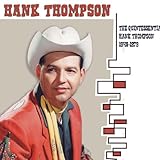 Normally, Closet Classics would feature an album but I think this song deserves its own CC feature. “The Wild Side of Life” is a classic country song, which alienates most of the music snobs instantly. It’s great to see that country has finally become accessible, songwriters in the UK are admitting to being influenced by it and it’s hard to believe now that for decades the genre was seen as a bad joke.
Normally, Closet Classics would feature an album but I think this song deserves its own CC feature. “The Wild Side of Life” is a classic country song, which alienates most of the music snobs instantly. It’s great to see that country has finally become accessible, songwriters in the UK are admitting to being influenced by it and it’s hard to believe now that for decades the genre was seen as a bad joke.
This song played a huge part in my childhood. Country music has always been popular in Scotland. I’ve got a few theories about that, but I’m sure the sociologists and musicologists can give you much better-researched explanations; here’s a personal perspective.
In 60s and 70s Scotland there was a great tradition of families and friends gathering (usually after the pubs closed, which was 10 o’clock in those days) to sing songs and tell jokes, and maybe have a wee dram or two. Most of the songs were country: “Crying Time”, “Please Help Me I’m Falling”, “From a Jack to a King”, “He’ll Have to Go” and the occasional standard like “Summertime”. Everyone had their own song which they performed at every session. I’m guessing that they picked up those songs from American Forces Network (AFN) radio, American military bases and artists playing in working men’s and ex-servicemen’s clubs. However they did it, they learned those songs and passed them on in the age-old oral tradition. A lot of those songs made it on to the club circuit because you didn’t have to be a great guitar player to do passable job of supporting your voice with a few chords on an acoustic guitar to sell a good song; depending on your vocal range, you could get by with C, F and G at a push. Some combinations of those letters might have even helped you with hecklers.
So why “The Wild Side of Life”? Really simple, it was one of my grandad’s songs and he could really sing (and he fought in a world war, got shot, went to New York, and won a Fife Junior Cup football medal as well); when you grow up hearing a great song delivered with feeling by someone with a good voice, then it’s going to stick for life. And you’ve probably guessed that there was a bit of hero-worship in there as well. So the song was stuck in my consciousness and it wasn’t going away and, although the early 70s seemed to be a country-free zone on the surface (apart from the schlock that made the UK charts), my favourite singers and songwriters (Neil Young and Jackson Browne, for example) were heavily influenced by country singers; Neil Young even covered “Oh, Lonesome Me”. Towards the end of the 70s, it became acceptable to like “The Wild Side of Life” when it was covered by such rock tastemakers as Status Quo and Rod Stewart, but I was there way before all of those denim boys and feather cut fancy dans because I loved the original.
The classic version of the song, for me anyway, is the 1952 version by Hank Thompson, whose plaintive vocal perfectly matches the theme of loss in the song, but there are dozens of others by country artists before you even start to look at pop covers. The song even generated one of the earliest answer songs in Kitty Wells’ “Wasn’t God Who Made Honky Tonk Angels”, which was also a No. 1 in 1952. As the 70s morphed into the 80s, more country acts crossed over into the mainstream and artists like Carlene Carter, Rodney Crowell and Rosanne Cash along with the bad boys like Willie Nelson and Merle Haggard. Even angry young man Elvis Costello did an album of country covers and it was ok to admit that you always loved country music.
That should have been the end of the story, but there was still another twist. When I moved to London and worked with people whose parents came to the UK from the Caribbean, I discovered that they grew up listening to the same music that I had listened to as a kid in a Fife mining village. Now, that was a weird sensation; discovering a completely unsuspected common musical heritage with friends from a completely different background and maybe that says something about music being able to break down all sorts of barriers. Of course, the whole idea of country being big in the Caribbean in the 50s is old news now that Trevor Nelson has spoken about it, but it came as quite a shock at the time.
As for the song, well, whenever I pick up a guitar and start playing, it usually manages to poke its head in there and it’s a challenge to try to find a musical style you can’t fit it into. And it’s such a great song that it can make a mediocre player and singer sound reasonable. What more do you want?
 This album was released less than two years ago in May 2011, although Akira the Don (or
This album was released less than two years ago in May 2011, although Akira the Don (or  Adam Narkiewicz) has been making music as an artist and a producer for nearly ten years. He also became a dad this week, so it’s perfect timing to revisit his brilliant second album “The Life Equation”.
Adam Narkiewicz) has been making music as an artist and a producer for nearly ten years. He also became a dad this week, so it’s perfect timing to revisit his brilliant second album “The Life Equation”.
If you listen to 6 Music at all, you’re bound to hear songs that grab your attention instantly and won’t let go. I heard “Babydoll” while listening to 6 Music on a lazy summer Sunday in 2011. When the song had finished, thirty seconds on a search engine brought up www.akirathedon.com; a few more clicks and a waft of a credit card and the album was on its way, along with a handwritten thank you from the Don and a couple of badges as well. It was a good experience before the CD even came out of the case.
If you have to describe Akira the Don with one word, then that word is “eclectic”. The musical styles, the beats, the samples and the arrangements take their influences from British popular culture of the last 50 years and it’s almost totally unpredictable. The Don also manages to use humour in a way that most rappers can’t in that he’s actually funny. You won’t find any of those hapless “skits” that are obligatory on mainstream rap albums, but you will laugh at the knockabout humour of “A Cautionary Tale” and the social comment of “I Don’t Own a TV” (featuring a sample from the’70s Squeeze classic “Cool for Cats”).
“The Life Equation” is a great advert for buying a physical copy of the album; all the lyrics are included in the CD packaging and it’s an album which should be heard from start to finish for maximum impact. There isn’t a bad track on the album and even the throwaway final track “Big” has some clever and entertaining wordplay. There are more ideas and poetry here than on a dozen mainstream rap albums and you really don’t know what to expect next. The rap breakup song “Nothing Lasts Forever” (featuring Envy) moves from amicable split to bitter recriminations before seamlessly shifting into the hugely upbeat Motown pastiche love song “Babydoll”.
Listening to “The Life Equation” is a bit like throwing a lit match into a box of fireworks; you have no idea what’s going to happen next, but you know that it’s going to be entertaining. From the 100mph rock beats and breakneck-speed rap of “Video Highway” through the melodic Phil Spector feel of “We Won’t be Broke Forever” to the seven-section cycle of the title song, the album absolutely fizzes with musical and lyrical creativity and humour. Just give it a listen.
Normally we would have loads of Spotify links to this article, but the album isn’t available there so we’ve set up YouTube links where we can. If you want to hear anything that doesn’t have a hyperlink, you can listen to it The Don’s website here and if you like it, you can buy it as well.
 Well, the feedback on Closet Classics has been pretty good so far and it looks like it’s going to be around for a while. We would love to have more contributions from our readers, so do let us know about your favourite Closet Classic, why you like it and any memories it has for you. We’ve been asking our favourite bands and musicians to tell us about their CCs and we’re hoping to have some of those live fairly soon.
Well, the feedback on Closet Classics has been pretty good so far and it looks like it’s going to be around for a while. We would love to have more contributions from our readers, so do let us know about your favourite Closet Classic, why you like it and any memories it has for you. We’ve been asking our favourite bands and musicians to tell us about their CCs and we’re hoping to have some of those live fairly soon.
Meanwhile, we have our first reader contribution from Klare Stephens who loves “Kora Jazz Trio Pt 3”, which is so closet that there aren’t any Spotify links, but we have managed to locate a few YouTube links.
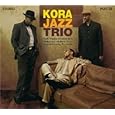 Kora Jazz Trio are Abdoulaye Diabate, Djeli Moussa and Moussa Cissoko and were formed in France. Djeli Moussa, the kora player comes from a long line of Griots, (African, in this case Guinean, troubadours) but with no liner notes or other information, biogs are hard to give other than that the pianist and percussionist originally hail from Senegal. To the uninitiated, the kora is the African cousin to both the guitar and harp and its rich instrumentation and has been played for centuries. It seems fitting that the Afro-American style of music, Jazz should here be played with such a traditional instrument, it seems bizarre that it has not been recorded like this before to my knowledge.
Kora Jazz Trio are Abdoulaye Diabate, Djeli Moussa and Moussa Cissoko and were formed in France. Djeli Moussa, the kora player comes from a long line of Griots, (African, in this case Guinean, troubadours) but with no liner notes or other information, biogs are hard to give other than that the pianist and percussionist originally hail from Senegal. To the uninitiated, the kora is the African cousin to both the guitar and harp and its rich instrumentation and has been played for centuries. It seems fitting that the Afro-American style of music, Jazz should here be played with such a traditional instrument, it seems bizarre that it has not been recorded like this before to my knowledge.
Of course African Jazz has been around and recorded for decades but usually with western instrumentation. Moussa is a true original adapting his kora to 32 strings instead of the usual 21, giving it an even greater harp like range and magical sound; and on this album he also plays guitar on some tracks. My initial concerns that the kora would compete for lyrical space with the piano were easily overcome, whether the kora is the natural complement to the piano or the product of its player’s harmony in this trio, I suspect the answer is both. The hand drums ground the music perfectly as well as completing the traditional African sound. Each player is given room to solo as is usual with a Jazz trio and the kora also makes a great instrument to accompany the others. Production values are clean and crisp but I can’t help fancying them live rather than live in a Parisien studio as this album is.
My stand out tracks are the instrumentals ‘Xam-Xam’ , ‘La Musse’ and ‘Chan Chan’ , unfettered by vocals the music can really fly and the vocal tracks alternate with instrumentals on the disc. The vocals as well as distracting one from the beautiful musical sound are uninspiring whether it is because I’m unaware of their content, I think it’s more because I’m unaroused by the emotional frequency and vocal sound; however this is a great collection overall. On their first CDs, Kora Jazz Trio Pt 1 (2003) and Part2 (2005), they stayed closer to American Jazz with compositions from the likes of Charlie Parker and Thelonious Monk, where the kora takes the brass part, but on their third album they are confident enough to stride out with mainly home grown tunes although, ‘Chan-chan’ written by Francisco Repilado comes from the fine stream of Latin Jazz.
All the songs on this album are uplifting and upbeat and left me with the conundrum of whether I should file them under the genres of Jazz, African or Dance music, in the end I settled for World Fusion but these really are the roots of Jazz with the instruments it would have been originally played on. Perfect for early morning coffee and equally good with late night wine, Kora Jazz Trio are a band to track down and I suspect to see them live, judging from the limited YouTube footage, would be a musical treat.
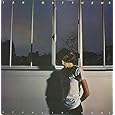 Let’s just start this with a little bit of background. By the mid-70s Ian Matthews had been a member of Fairport Convention, had a UK number 1 with a Joni Mitchell cover and then disappeared from the UK mainstream scene. The name, and the odd single, could still be heard occasionally in the background as punk and new wave barged and elbowed everything else out of the way but you had to be listening carefully. So I listened carefully in 1979 and I heard “Gimme an Inch Girl”, an Ian Matthews cover of a Robert Palmer song which got a bit of radio play but did nothing chartwise.
Let’s just start this with a little bit of background. By the mid-70s Ian Matthews had been a member of Fairport Convention, had a UK number 1 with a Joni Mitchell cover and then disappeared from the UK mainstream scene. The name, and the odd single, could still be heard occasionally in the background as punk and new wave barged and elbowed everything else out of the way but you had to be listening carefully. So I listened carefully in 1979 and I heard “Gimme an Inch Girl”, an Ian Matthews cover of a Robert Palmer song which got a bit of radio play but did nothing chartwise.
During the summer of the following year I was visiting the first love of my life in that wicked London place and I had a bit of time to kill on the way home. The first Virgin megastore had just opened at Marble Arch and that had to be worth a look; there were so many records I didn’t know where to start.
The only album I picked up that day was a cut-out import copy (on blue vinyl) of “Stealing Home” by Ian Matthews. I recognised the single “Gimme an Inch Girl” and thought it was worth a couple of quid for that even if everything else was unlistenable, which was pretty unlikely. I never thought for a second that it would be an album I would love instantly and forever; the first time I listened to “Stealing Home” from beginning to end was a musical epiphany.
The album was recorded in Chipping Norton in Oxfordshire but was aimed squarely at the American market; you can hear it in the lyrics and the arrangements and you can see it in the sleeve design. There wasn’t a chance that it would sell significant amounts in the UK in the aftermath of punk, but that was never the objective. An album with great session players, tasteful (bordering on minimal) FM radio-friendly arrangements and lyrics dealing with American themes was never a commercial proposition in post-punk UK; throw in a singer with a plaintive high tenor voice and, in 1978, USA becomes the target market.
Ian Matthews didn’t really have a reputation as a great songwriter at the time, but he was already known as an interesting interpreter of other people’s songs. He had already scored a UK No.1 in 1970 with a cover of Joni Mitchell’s “Woodstock” and had a stab at Van Morrison’s “Brown-Eyed Girl” which, unbelievably, made no impact on the charts. Nothing I’d heard before prepared me for the beauty of “Stealing Home”.
The album opens with the 1 track I’d already heard, “Gimme an Inch Girl”, which sounded better on my hi-fi than on the radio (no FM in 1979), so I knew I was on to a winner straight away. There isn’t a track on the album that I don’t love, even now. I have to be honest and admit that I’m fairly partial to a melancholy song and this album is full of them.
I admit that I didn’t realise in 1979 that the theme running through the album was the failure of the American dream (and it should have been obvious because I loved “American Graffiti” and “The Last Picture Show”). Ian Matthews picked out songs about the party set, car fanatics and sports groupies to form the backbone of this album. It’s a melancholy album because it looks back at the unfulfilled promise of American lives in the same way that Bob Seger did with songs like “Hollywood Nights” and “Night Moves” and Jackson Browne did with “The Pretender”.
“Don’t Hang Up your Dancing Shoes” is a Terry Boylan song about an attempt to persuade the Homecoming Queen to take one last chance a former beau and sets the tone for the rest of the album, musically and lyrically. “King of the Night” is a poignant ballad written by Jeffrey Comanor (a cult figure at the time who also collaborated with Shel Silverstein on the Dr Hook song “Makin’ it Natural”), which focuses on the plight of the forgotten former street racer and is followed by Matthews’ funky version of the great John Martyn song “Man in the Station”. Side 1 of the album (I bought it on vinyl, so I’m sticking with that format) ends with a fairly rare (at that time) Matthews composition, “Let There be Blues” which keeps the melancholy mood nicely on track.
And then I turned over to Side 2 for the real revelations. The first track, “Carefully Taught”, is a perfect example of Matthews’ ability to completely remake an existing song. The original is a workmanlike Rogers & Hammerstein song from “South Pacific” with very good intentions, played as a fast show song, which Matthews strips back to a half-tempo a cappella version while editing the lyrics to fit everything in to an extraordinary 60 second masterpiece; if you don’t appreciate this, you have no soul. Listen to the original “Carefully Taught” and decide for yourself.
This is followed by a strong Matthews original, the title song, “Stealing Home”, another melancholy song which deals with a disintegrating relationship. The most commercially successful song on the album, “Shake It”, is next, moving the tempo up a few notches while keeping up the theme of nostalgia for a happier era. It’s one of Terry Boylan’s finest moments and was a deserved American chart success.
Next up is another of the album’s revelations and a great example of Matthews’ ability to fit songs to his own mould. “Yank and Mary(Smile)” is a medley which combines the verses from a Richard Stekol song about two ingénues moving to California with the chorus from the Charlie Chaplin song “Smile”. It’s a perfect mix because the two songs blend seamlessly into a beautiful whole.
The two songs which round off the album, “Slip Away” and “Sail my Soul” , are both co-written with Bill Lamb. The first is a mid-tempo song aimed at the same market as “Shake It” and the second is a soulful ballad with some lovely slide guitar which finishes off the album with a positive message that relationships can work sometimes.
If you love great songs, great singers and great arrangements, you should listen to this album. It may be really unfashionable in the current musical climate but this is a beautiful album and it’s one of my closet classics. If you want to find out more about Iain Matthews (as he’s known again now) have a look on his website.
We always welcome feedback at Riot Towers so let us know if you listened to the album and liked (or hated) it. Even better, send us your feelings about your own closet classic and there’s a good chance that we’ll use it on the site.
Also, let us know what you think of using Spotify links to featured songs and albums. How quickly did the links work? If you downloaded Spotify from the link provided, how quickly did it download? Do you like the idea of having instant access to the songs being reviewed? Your feedback will help us to give you a better and more responsive site.
[si-contact-form form=’1′]


